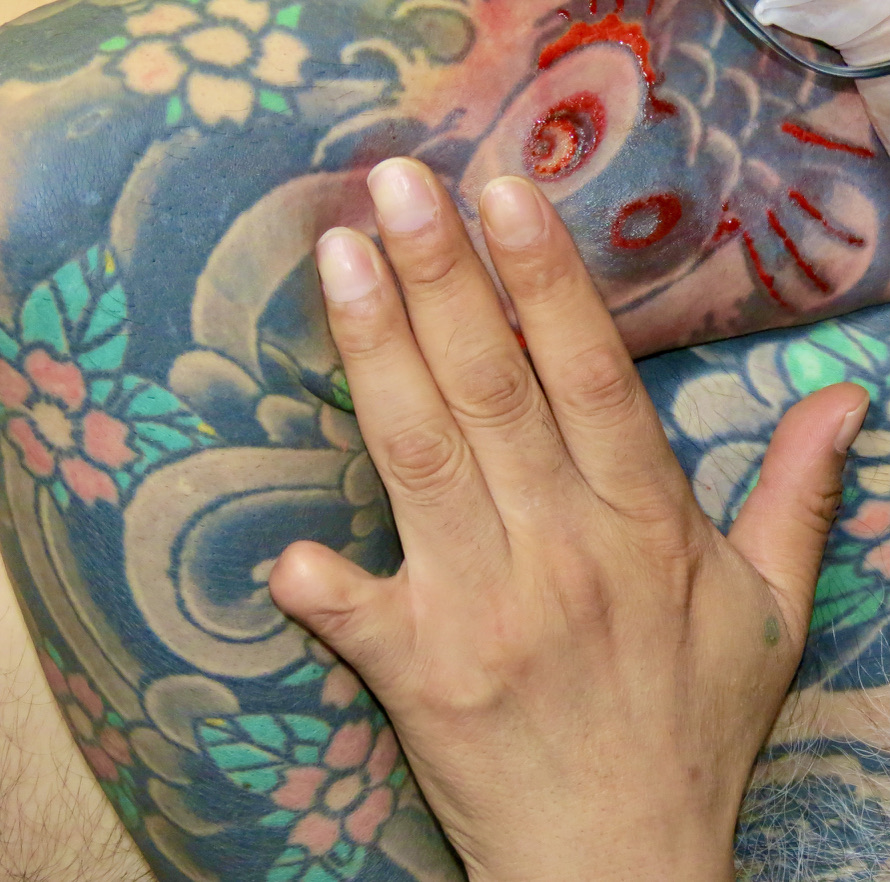
指詰め (Severed Pinkie) ©Jake Adelstein
Ever spotted something odd about someone’s hands nearby? Everything seems ordinary until you notice it: one finger joint missing, maybe a whole finger, maybe several. lt leaves a noticeable gap. One reason gifting the yakuza in your life a pair of gloves is a terrible idea. It’s a constant reminder, always in plain sight, of the shady practices that led them to that moment.
Yubizume, literally translated as “finger cutting,” is a widely practiced ritual in underworld circles. It’s also known as enkozume, with “enko” being gangster slang for fingers. As the name suggests, this ritual involves individuals voluntarily severing their own fingers with a blade. But what becomes of the discarded finger, you wonder? Its fate is to be offered as a gesture of apology or loyalty to a boss or senior figures.
The origins of this gruesome practice go back to the Edo period, when courtesans in the Hanamachi district would sacrifice their fingers or deliver their nails as tokens of loyalty to male clients. In those days, severed fingers were the ultimate symbols of devotion, far from today’s flowers and chocolates. How times have changed.
Finger severance later permeated the underworld as a rugged testament of loyalty. Enduring the pain became a way for lower-ranking members to prove their allegiance to the boss, convincing them of their unwavering dedication–some say.
In the underworld, the reasons for chopping off your finger matter a lot. If you cut off your finger to atone for your own mistakes, that’s a 死指 (shiniyubi–dead finger). If you offer up your finger to atone for the mistakes of another or have them spared from punishment, that’s a noble thing. That’s a 生き指 (iki-yubi/living finger). That’s honorable. Of course, you can’t tell how to classify someone’s lack of a finger without asking or knowing the story behind it but in Yakuza Junior High School (one way of thinking of the underworld) everyone knows which finger you’ve lost, and why and thus if it’s a dead finger or a living finger.
There are specific rules governing this practice that are worth noting. Typically, it’s the pinky finger that bids farewell first, with the ring and middle fingers being severed in subsequent order for more serious cases. The severity of the offense dictates the extent of the finger cut and apology owed. For lesser transgressions, the cut may be made at the first joint, while more severe offenses may require amputation starting from the second joint.
The thumb in Japanese is called oya-yubi (the parent thumb/親指) and thus crimes against your boss, the oya-bun (親分/father-figure), may cost you a thumb as well.
In recent years, the age-old values of loyalty and devotion have taken a back seat to a more materialistic approach to conflict resolution and proving one’s word with money. Yet, there are still those who opt for the age-old ritual of finger-cutting. So, when you’re making a deal in Japan, you don’t need to shake hands but you might want to really check the hands of the person you’re dealing with. For more information on the Japanese underworld, please check out the other entries in our Tokyo Vice Vice-O-Pedia Series.